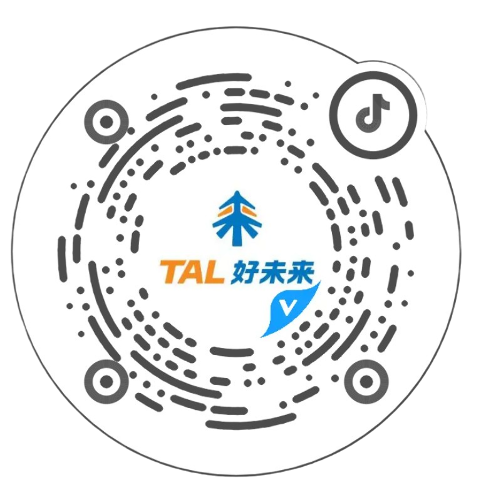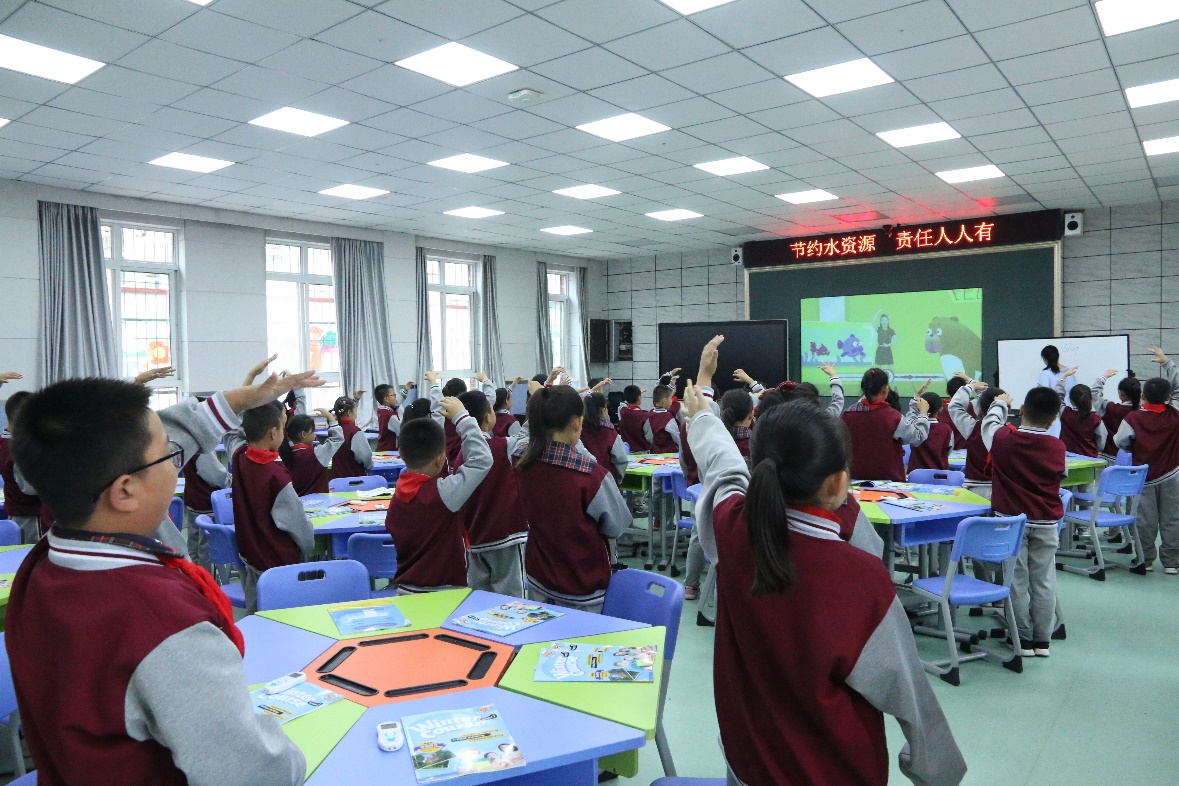




To help policy makers better address the risks and challenges of AI and education integration, UNESCO has recently published "AI and Education: Guidance for Policy-Makers." The report delves into cutting-edge topics such as educational equity, inclusiveness, gender equality, and privacy protection amid the rapid development of artificial intelligence (AI). The report fully acknowledges the rapid development and specific practices of AI and education integration in China. The "AI Teacher Chinese Learning System," independently developed by Xueersi Online School (a subsidiary of the technology education company TAL Education Group), and the "weclass AI English" (formerly "LeWaijiao AI Foreign Language Classroom") created by TAL's enterprise-focused (To B) project team, have both been included as outstanding practical cases in the field of AI+ education.
AI Boosts Education in Western China
In the multimedia classroom of the Tenth Primary School in Xixia District, Yinchuan City, Ningxia Province, as soon as the English teacher Wang Xiaoyan finished speaking, the foreign teacher Rebecca with antler headwear appeared on the screen with a background of ugly fish and fat bear, interacting with the students. Graduated from Harvard University, Rebecca, the primary lecturer, with her cartoon friends, made it easy for students to learn 6 English words such as beautiful, ugly, fat, and thin, as well as 3 types of questions using music, games, and voice recognition. Wang Xiaoyan, like a host, led students in classroom interaction, observed each student's feedback, and wrote the key points of learning on the whiteboard beside the screen.

Students learning English with a Harvard foreign teacher in the Future Magic School AI English classroom
In April 2019, the "weclass AI English project" was officially put into use at the Tenth Primary School in Xixia District. Since then, this school in the northwest has presented a rare real foreign language environment in English classes. With Harvard foreign teachers conducting interactive classroom activities, the children’s learning interest has been stimulated, and they are increasingly fond of and eager to attend English classes. In the "weclass AI English project" classroom, children can achieve 3.75 times of immersive interaction per minute and actively read out loud more than 300 times per class.
What's even more exciting is that the "Wclass AI English Program" also utilizes AI to transform students' classroom performance into big data. Teachers can analyze the data and combine it with in-class observations to make a comprehensive evaluation of the English learning situation of students in the class, so as to provide precise guidance.
The principal of the Tenth Primary School in Xixia District, Yinchuan City exclaimed, "In the path of modernizing education, people from the northwest are now catching up with the pace of those in north and south China by boarding the high-speed train. We must seize this opportunity to catch up with the fastest development era."
In response, UNESCO's "AI and Education: Guidance for Policy-Makers" report evaluated that the "weclass AI English project" provides better support for teachers to complete important teaching tasks through action recognition and data feedback from answering devices. It regards the project as a model of AI empowering teachers and promoting teaching.
Xueersi Online School: Children in Mountainous Areas Have Permanent Teachers
Yi girl Ma Hailuo never imagined that one day, her favorite thing would be reciting Chinese texts. You see, she, who grew up in the mountains, could hardly speak Chinese.
Ma Hailuo comes from Zhaojue County, Liangshan Prefecture, Sichuan Province, the largest Yi-inhabited county in China, where many children are not proficient in Chinese. This poses a significant barrier for them to communicate and learn with the outside world. In 2018, after an in-depth investigation, Xueersi Online School independently developed the "AI Chinese Learning System for Teachers" by integrating speech recognition, speech evaluation, and other technologies. This system can provide intelligent assessment and correction of children's pronunciation in real time.

Yi children are learning Chinese through Xueersi Online School's "AI Chinese Learning System"
With AI teachers, Ma Hailuo is eager to recite texts with confidence every day. Like Ma Hailuo, six-year-old Qumu'a-er was able to introduce himself in Chinese and sing a song after a year of learning Chinese with AI teachers. Now, he is the little "translator" at home. When family members communicate with "outsiders," he takes on the role of the "translator."
The arrival of the "AI teacher" has provided local children with Chinese teachers who will not leave, and the improvement of their Chinese proficiency has given them the ability to obtain more opportunities outside the mountains. Currently, the system covers 252 preschool teaching points, nearly 90,000 students, and over 2,000 teachers in Zhaojue County.
The relevant person in charge of the education department of Zhaojue County stated, "The 'AI Chinese Learning System' provides standard Chinese learning materials for teachers and students from the aspects of voice and speech speed, and it is a good teacher for children in remote minority areas to learn Chinese. It plays a key role in improving the Chinese ability of early childhood students in our county."
In April 2020, the "AI Chinese Learning System" was the only educational informatization project in China selected as one of the top five in the Hamad Bin Isa Al Khalifa's Award for the Use of ICT in Education by UNESCO. That same year, the system was also recognized as an innovative demonstration project for "Artificial Intelligence and Inclusiveness" during UNESCO's annual Mobile Learning Week.
The successful practice of the "AI Chinese Learning System" has been deemed by UNESCO as a typical application case of AI in the field of reading and language learning and has been included in the "AI and Education: Guidance for Policy-Makers" report.
Collaborative Resolution of Ethical Issues in Technology
Clearly, AI is significantly changing the education mode. It can liberate teachers from traditional and low-efficiency teaching work, allowing them to focus more on personalized student growth, and minimize differences in location, wealth, and other factors to provide children with equal and homogeneous education opportunities.
However, while AI greatly promotes educational development, it inevitably brings about various risks and challenges. The "AI and Education: Guidance for Policy-Makers" report points out that in the "AI+education" field, there may be ethical constraints, gender discrimination, and teacher role weakening, among other issues.
It is reported that UNESCO and TAL Education Group and its subsidiary Xueersi Education Technology have conducted several collaborations to address these issues. In 2019, they jointly launched a project for technological ethics research to explore the deep-seated reasons behind the conflict between new technology and traditional education and to propose positive solutions.
The "AI and Education: Guidance for Policy-Makers" report reviewed existing policies of various governments and provided a series of specific and actionable recommendations for policy makers, including establishing a systematic strategic perspective, establishing a testing and evaluation evidence database, and promoting education-oriented AI technology innovation, to assist policy makers in making better policy adjustments based on their respective national conditions.